Negative impacts of tourism on the environment
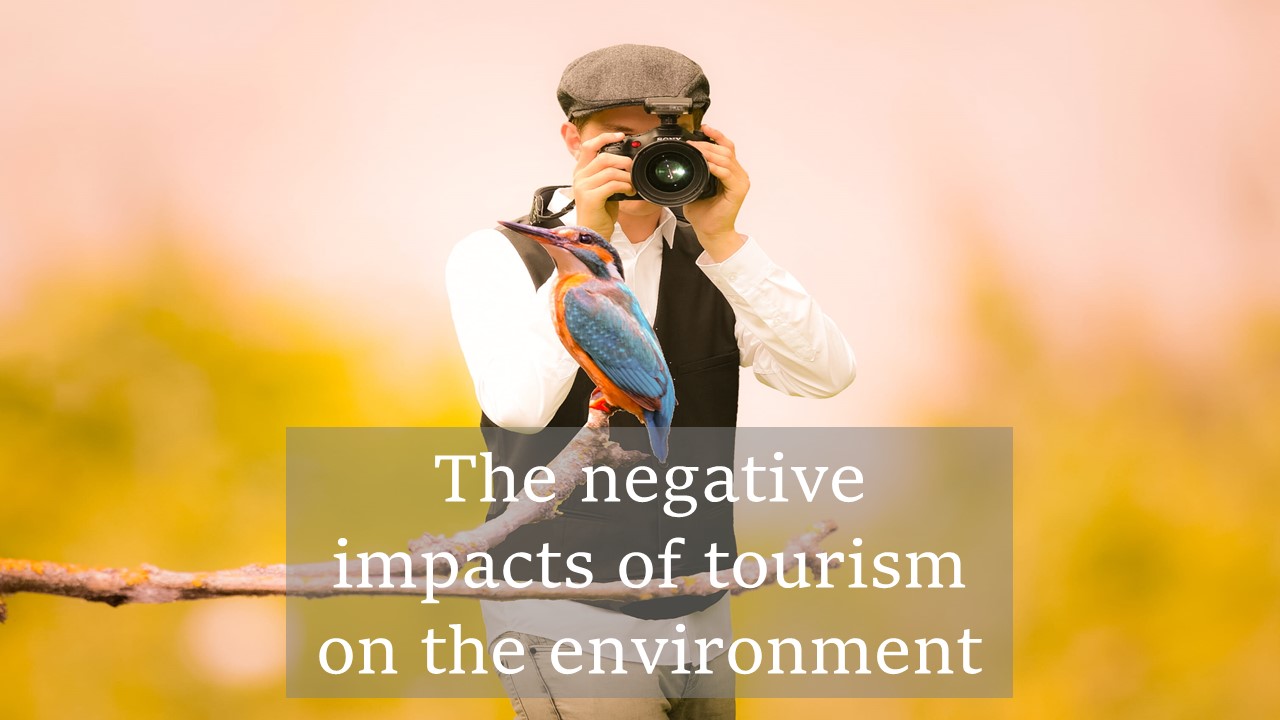
Over the past four decades, there has been a lot of research on the negative impacts of tourism on the environment. The UNWTO reports that tourism reached 1.4 billion total international tourist arrivals in 2018 with tourism exports amounting to USD 1.7 trillion.
Today, more people travel as they have more money to do so. There are also better transport facilities that make travelling from one place to another easier.
As it is, many nations around the world heavily depend on tourism earnings. This is especially true for small islands that have limited resources. In the Caribbean for instance, travel and tourism accounted for 13.9% of the GDP in 2019.
Yet, as tourists visit places, it also leads to negative impacts on the environment.
Negative impacts of tourism on the environment
In general, tourists affect the environment in 5 ways:
- they perturb biodiversity,
- overconsume water and cause pollution,
- affect air quality,
- make noise and
- degrade land.
1. Tourism perturbs biodiversity
One of the most menacing negative impacts of tourism on the environment is that it perturbs biodiversity. Many studies reveal that if we don’t properly manage tourism, it can have drastic consequences on biodiversity [1].
The Secretariat of the Convention on Biological Diversity declares that the major reasons for biodiversity decline including
- pollution,
- overexploitation,
- habitat change,
- climate change and
- the introduction of invasive species are all closely linked to the tourism sector.
In China, for example, tourism facilities are in place in the famous Changbai Mountain Reserve. But it has been at the expense of tundra cover. Likewise, trampling, plant picking and invasion of alien species led to large losses of vegetation in the Bitahai Wetland Scenic Area.
Alters behaviour in wildlife
Moreover, tourism can alter the behaviour of wildlife, especially during nesting and breeding seasons. Studies show that when tourists are present, animals can immediately change their behaviours and even depart from their native regions. This can then lead to a decrease in the number/distribution of species. Eventually, it can have severe repercussions on the whole ecosystem. Or it can also change the physical strength, health and sexual capacities of animals.
We note these behavioural changes in elephants, kangaroos, gorillas, whales and wild horses. And unfortunately, when it comes to birds, certain species never return to their homelands because of tourists.
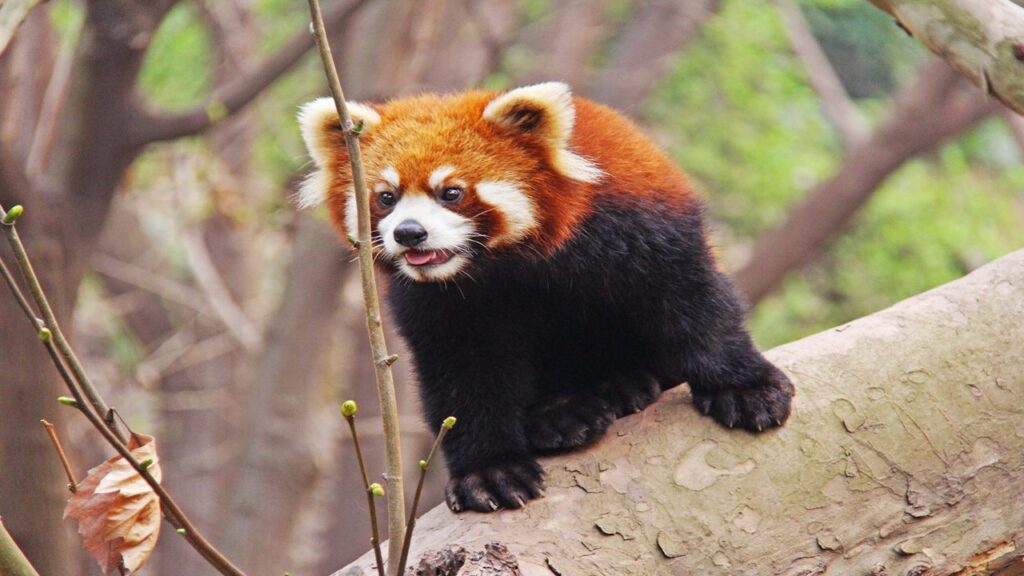
Extinction tourism
Sadly, today, many tour operators and agencies are capitalizing on endangered species. They call it extinction tourism or ‘last chance’ tourism. For instance, Antarctica tourism has become famous in the last years by pitching polar bears as ‘must-see before they disappear’ species.
As various species are facing extinction, tourism promoters are using them to make money. Then tourists rush to see these exotic animals and plants to form part of the ‘ones who saw’. But, at the same time, they exert a lot of pressure on the environment. It can be in the form of pollution such as releasing motor oil into the sea to see polar bears. Or they can instigate stress in these creatures thus decreasing their reproductive success.
2. Water overconsumption and pollution
Water is one of the most important natural resources on Earth, and the one that we exploit the most as well. As it is, one tourist uses 84 to 2,000 litres of water per day. Now, there is a tendency for tourists to use more water in hotels as in showers, taps, pools etc. Because of this water overconsumption, the water levels in many host communities may decline.
Water pollution and eutrophication
At the same time, tourism leads to water pollution for example through sewage discharge. Cummulative effects of this pollution can lead eutrophication and the collapse of ecosystems.
Contaminate aquifers
Also, as polluted water infiltrates underground, it can contaminate aquifers. We see this in China, India, Sri Lanka and Australia where heavy tourism activities have affected the groundwater.
Litter water bodies
Likewise, tourists also litter water bodies thus making them unsightly and even poisoning wildlife. Famous tourist destinations like Thailand and the Philippines indeed had to suspend access to certain tourist spots. They had to clean up dumped sewage and allow the sites to recover from pollution.
Affects coastal areas
One of the most common types of tourism, which in fact accounts for 80% of all tourism, is coastal tourism. Most of us like actually like the sun, sand and sea trips.
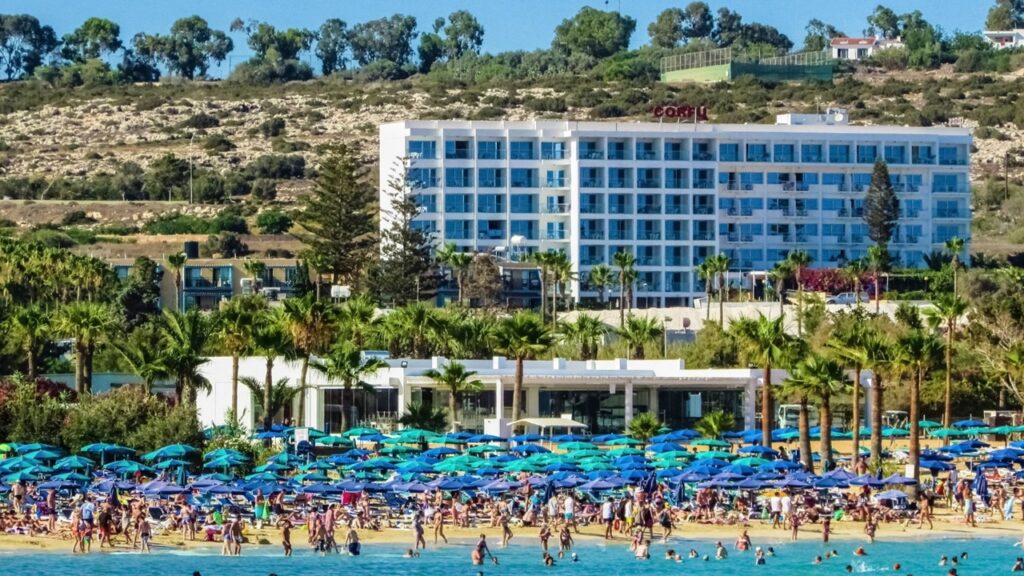
But, in order to make place for tourists amenities like hotels, we often have to clear mangrove forests. And to make lagoons clear, we remove seagrass beds. These ecosystems are in fact very precious as they naturally absorb pollutants.
The waste that tourists produce also must go somewhere. And more often than not, they end up in the sea. Many sea creatures such as turtles and fish die when they ingest rubbish or when they are trapped in them.
Similarly, when tourists take part in activities like snorkelling and diving, they damage coral reefs. The anchors of boats can also destroy reefs or stir up sediment that chokes coral polyps.
3. Tourism affects the air quality
Worsen global warming
Moreover, tourism has a severe impact on air quality. As an example, there is air pollution in the Changbai Mountain Reserve in China because tourists use fossil fuels to cook.
In general, the majority of tourism-related activities from aviation to shopping depend on fossil fuels. As such, they release greenhouse gases when we burn them thus worsening global warming. During the period 2009 to 2013 only, the tourism sector emitted 3.9 to 4.5 Gt of carbon dioxide. These values were four times higher than what was expected.
In fact, carbon emissions from the tourism industry today account for 8% of all total greenhouse gas emissions. And they come mostly from tourism-related transport, shopping and food consumption.
Affects air quality in caves
Additionally, tourists also change the air quality in caves as they breathe out carbon dioxide. In France, an abundant growth of algae tarnished the Lascaux Cave paintings. This was because people used too many artificial lights and the level of carbon dioxide also rose up.
Burning incense, coal and timber for worship
Similarly, cultural tourism also influences air quality. When people burn incense, coal and timber in large amounts for worship, they release noxious gases such as sulphur dioxide. We see this in many countries like India, China and Taiwan.
4. Make noise
Basically, where people gather for fun and activities, they make a lot of noise. It can be due to traffic, development, movement and behaviour amongst others. Generally, we regard a sound level beyond 50 dB as noise in any tourism area.
In the natural environment, such noise can significantly affect wildlife thus leading to hostility or fear. Consequently, some animals may completely avoid certain areas. Others may face difficulties to mate and nest. What’s more, birds and frogs may even have to change their call frequencies to be heard.
5. Tourism degrades land
Unplanned or irresponsible tourism development can seriously affect the land. Eventually, there can be even problems like soil erosion, landslides, avalanches and desertification.
Or tourists themselves can change the composition of the soil due to strenuous trekking as we note in Nepal. Indeed, several studies confirm that trampling in nature reserves significantly changes the soil quality. Sometimes, it can prevent certain plant species to grow.
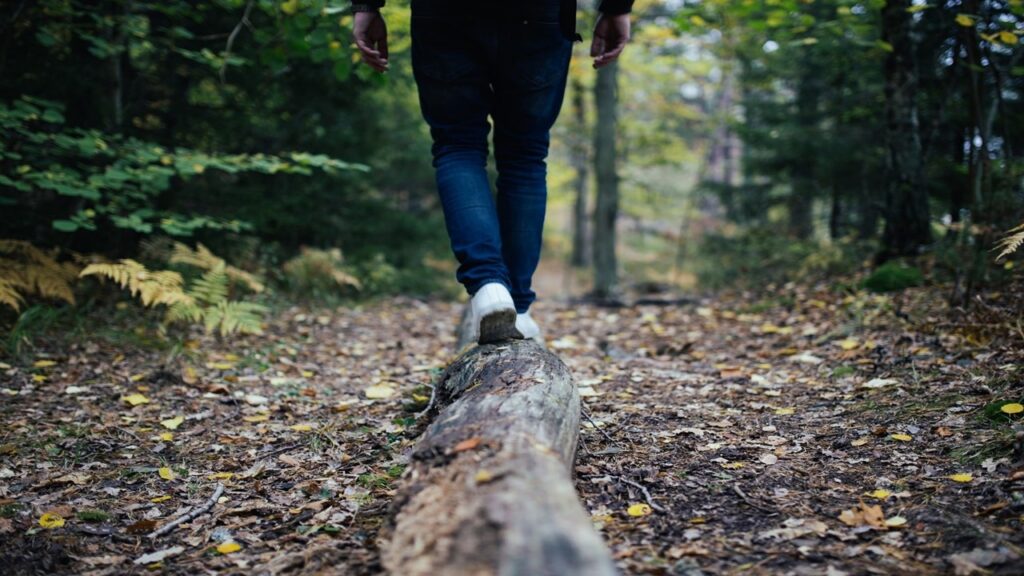
Deliberate and accidental impacts of tourism
Nonetheless, it is worth to note that many of the negative effects of humans on the environment are not deliberate.
Deliberate impacts are more obvious such as consumption, fishing and hunting. Most tour operators and agencies who engage in these activities are nonetheless subject to specific legislation, permits and obligations.
As it is, environmental change takes a long time to materialize. So, in many cases, tourists may be unaware of their impacts on the surroundings despite visiting the same place regularly.
What’s more, these impacts are often cumulative in nature such that individual impacts may be insignificant. It is basically over long periods of time that we notice the effects like mountain climbing with heavy gear.
It the end, we must understand that there is a complex relationship between tourism and the environment. Claiming that any specific type of tourism will not be environmentally damaging is naïve. And pretending that all forms of tourism are environmentally damaging is unrealistic both economically and environmentally. So, to maintain the equilibrium, we should opt for sustainable tourism.
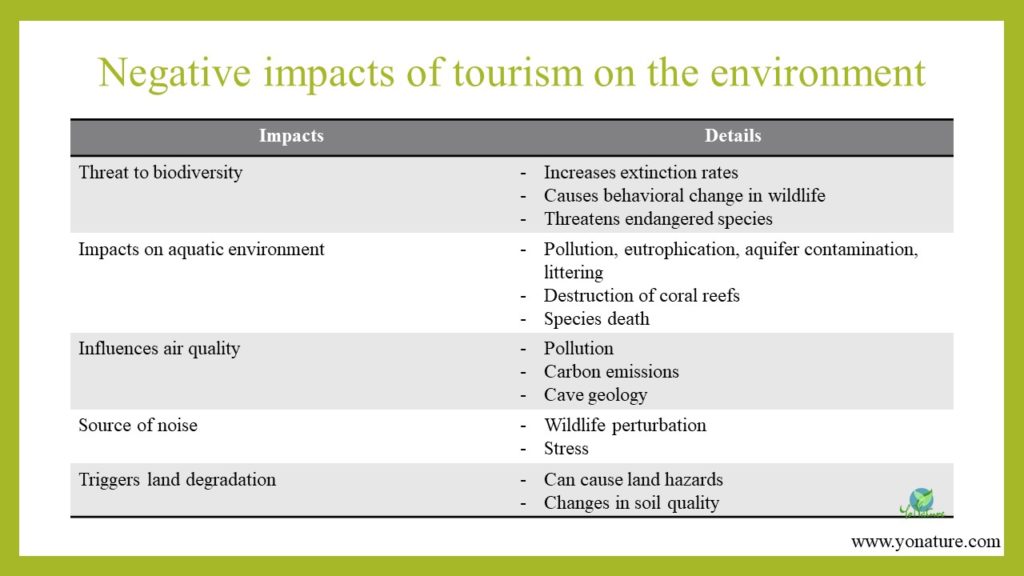

Pingback: 14 simple ways to reduce your ecological footprint - Yo Nature
Pingback: COVID-19: How will the pandemic change the world? - Business News
Pingback: Tourism Explained: Definition, History, Types - Yo Nature
Pingback: Effects of flooding: Positive, Negative, Examples - Yo Nature